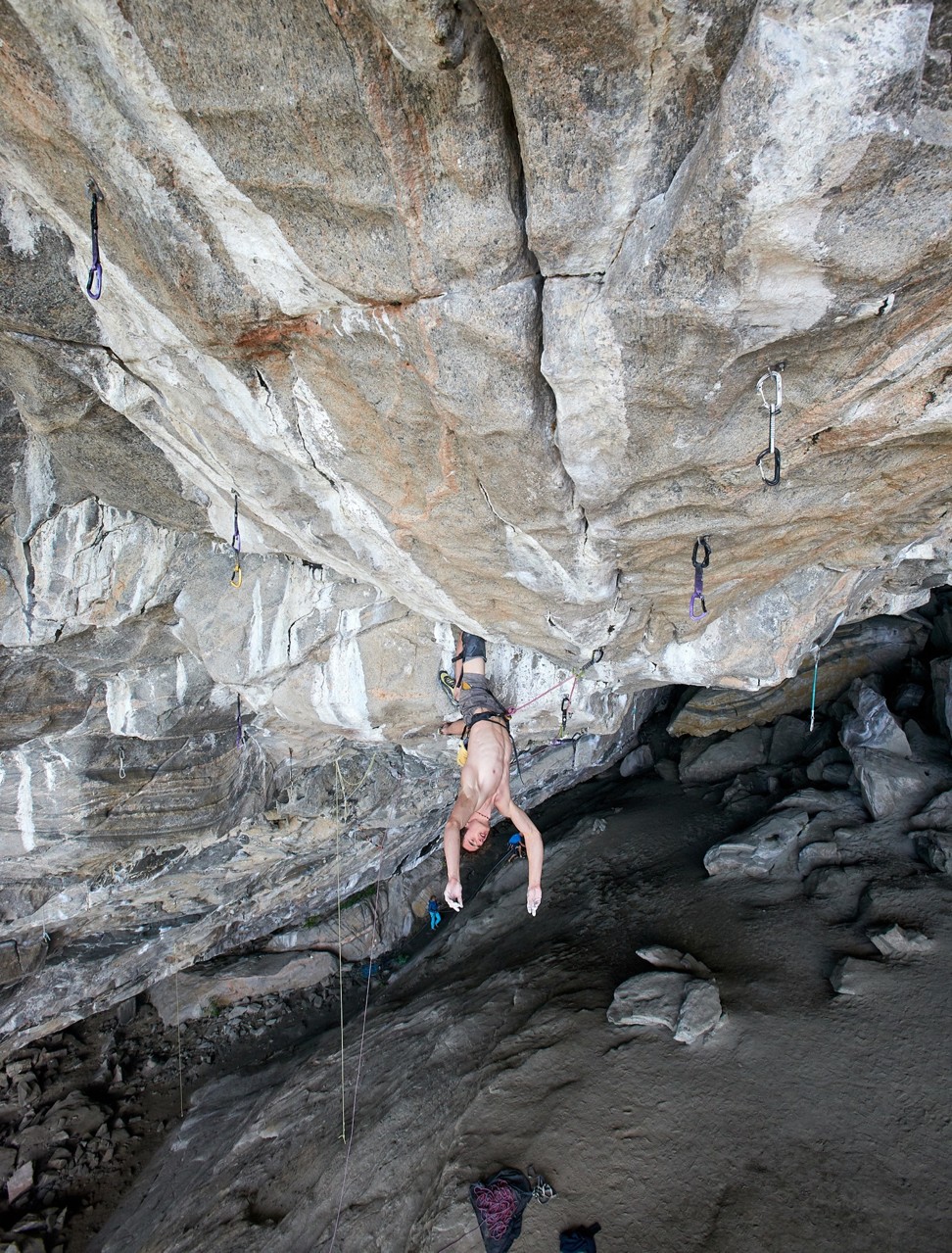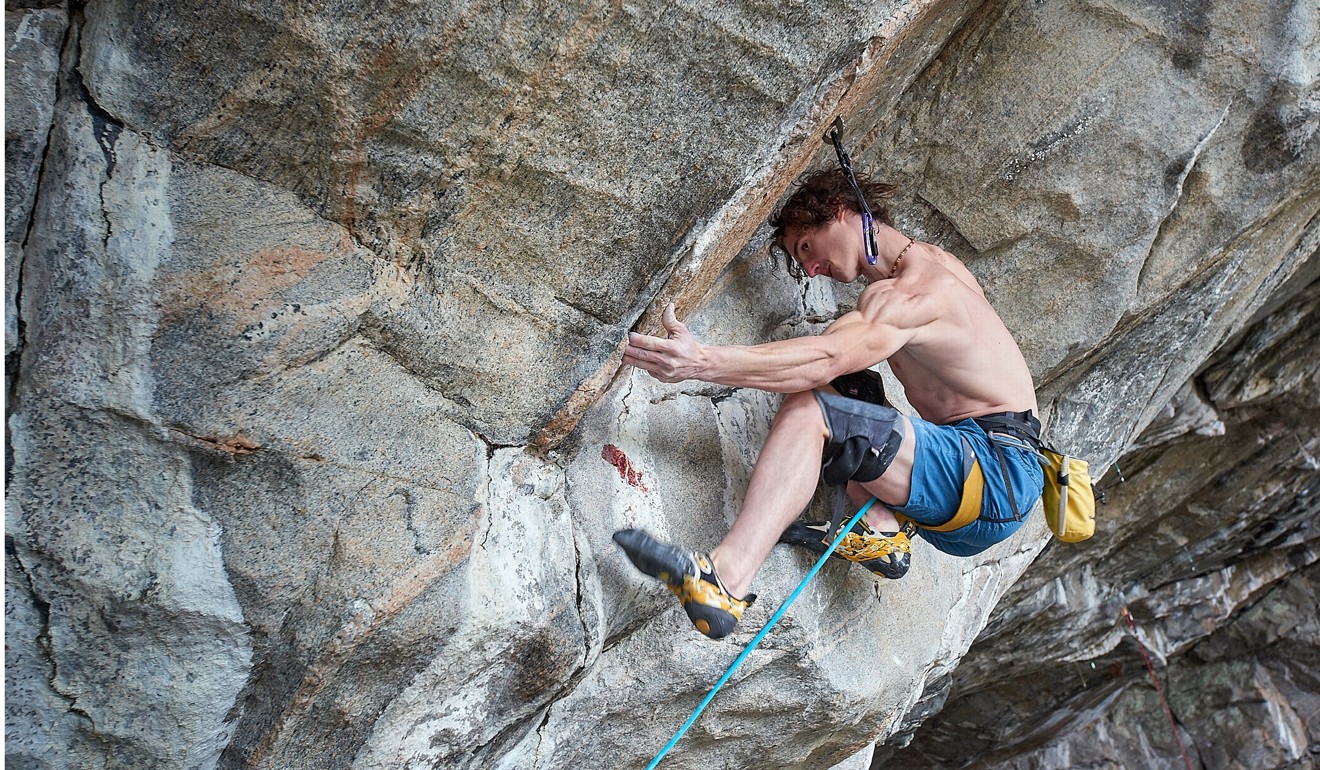Czech climbing prodigy sets new benchmark with astonishing ascent of ‘world’s hardest cliff’
Adam Ondra’s improbable 20-minute climb across the ceiling of the Hanshelleren cave in Norway came after more than 40 days of attempting the route

In the last few years the tiny world of elite rock climbing has fixated on a giant windswept granite cave in Norway, and the potential for one climber, Adam Ondra, to set a new benchmark in the sport.
Like a giant eye socket set in a hillside, the Hanshelleren cave in Flatanger – claimed by some as the world’s greatest climbing cliff – has become a summer mecca for the world’s best climbers who come to dodge the Scandinavian showers and pit themselves against its vast overhangs.
Now, after over 40 days of efforts spread across two years and seven visits to Norway, Ondra has completed what is being claimed as the world’s hardest single rope-length climb, both in terms of physical effort and technical difficulty. It is the first climb rated “9c” on a popular scale.
Monday’s climb – 45 metres long and forging its improbable way through the cave’s huge grey overlapping ceiling – marks the latest achievement by Ondra, 24, a prodigy who has dominated rock climbing in recent years in the same way Usain Bolt once dominated sprinting, consistently setting new levels of difficulty that others have struggled to follow.
For a so-called sport climb – in which expansion bolts are drilled permanently into the rock to clip the rope in to – climbers can spend months (sometimes even years) trying to complete their first ascents.
For Ondra success finally came on Monday in 20 intense minutes after between 40 and 50 days of attempts over two summers.
“When I knew I did it, I had one of the strangest emotions ever,” he said, describing the moment of catharsis when he completed the ascent.

Speaking shortly after the ascent he explained the long process that began four years ago.
“It’s a very special climb. Very weird. I searched for a climb that would fit my style, and it fit my expectations.”
The “weirdness” Ondra describes is evident in videos of him training on the climb, not least a bizarre sequence of moves on one of the two “cruxes” – the hardest sections – where, upside down, he is required to hang briefly from a jammed toe before rotating his whole body and climbing feet first along the tilted roof.
Four years ago Ondra – who is now beginning to think about the inaugural Olympic climbing competition in Tokyo – was not even sure that it was climbable.

“I bolted it in 2013. Back then I only tried it for a few days and thought it was way too hard. Then last season I started again. Over seven trips to Norway, I guess I’d say I spent 40 or 50 days trying it.”
It is not the first time in recent years that Ondra, who grew up in Brno in the Czech Republic, has claimed the world’s hardest climb.
He was the first person to climb a route graded 9b+ on the popular French sport-climbing scale, a feat that only one other climber has repeated.
On the French scale, the level of difficulty is graded on an open ended numerical system subdivided into three other sub divisions carrying a letter a, b or c in numerical order, with the addition of a “plus” to detonate a particularly hard climb for that grade.
After a first ascent, climbs can be adjusted up or down by consensus if necessary although in Ondra’s case there is no question among his peers that his hardest climbs represent the very pinnacle of the sport.
He said he felt he still had the capacity to climb even harder.
“When I did this climb I did not feel it was at my absolute limit. I can imagine climbing a harder route. I think I can climb more at this grade one day and potentially harder.”